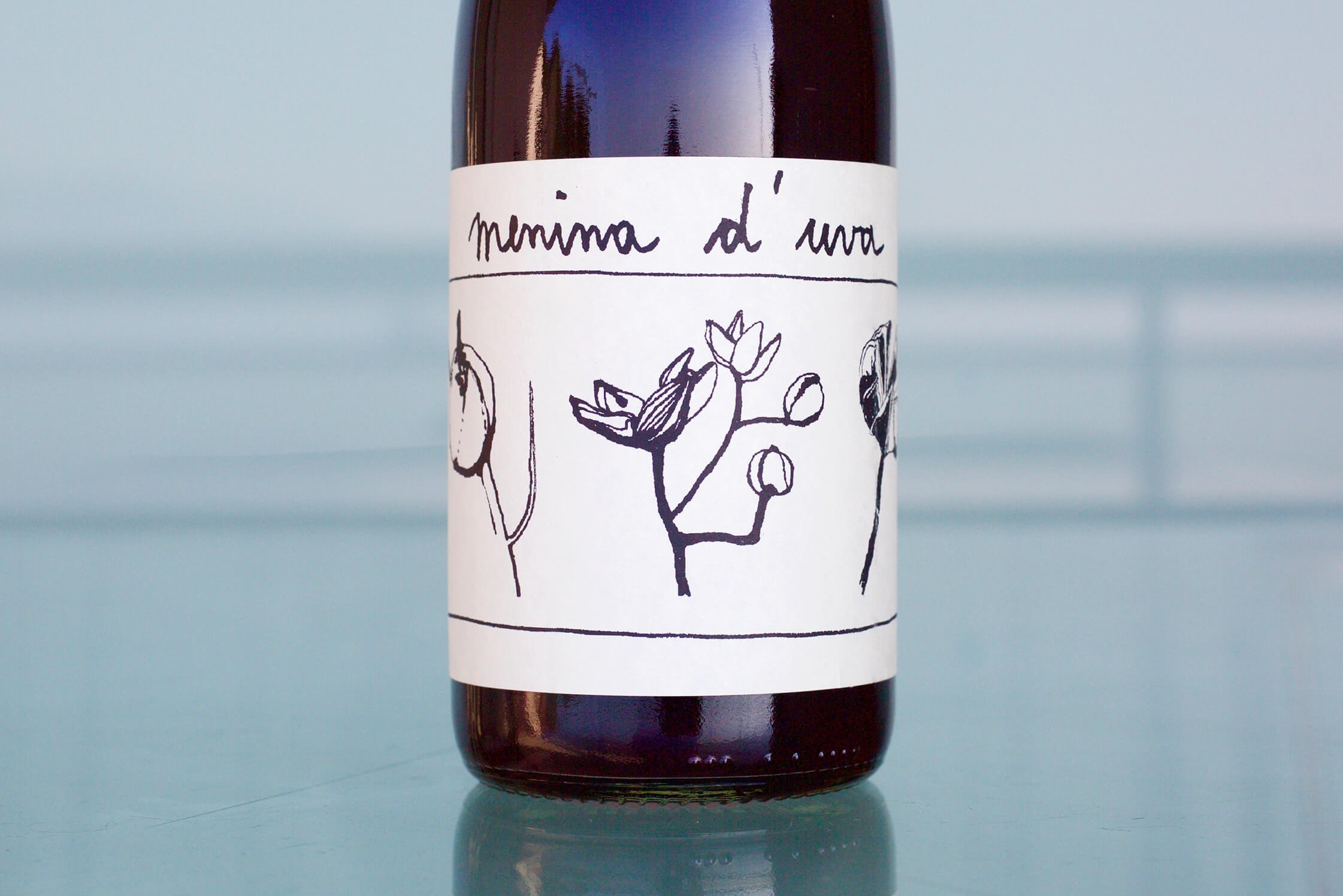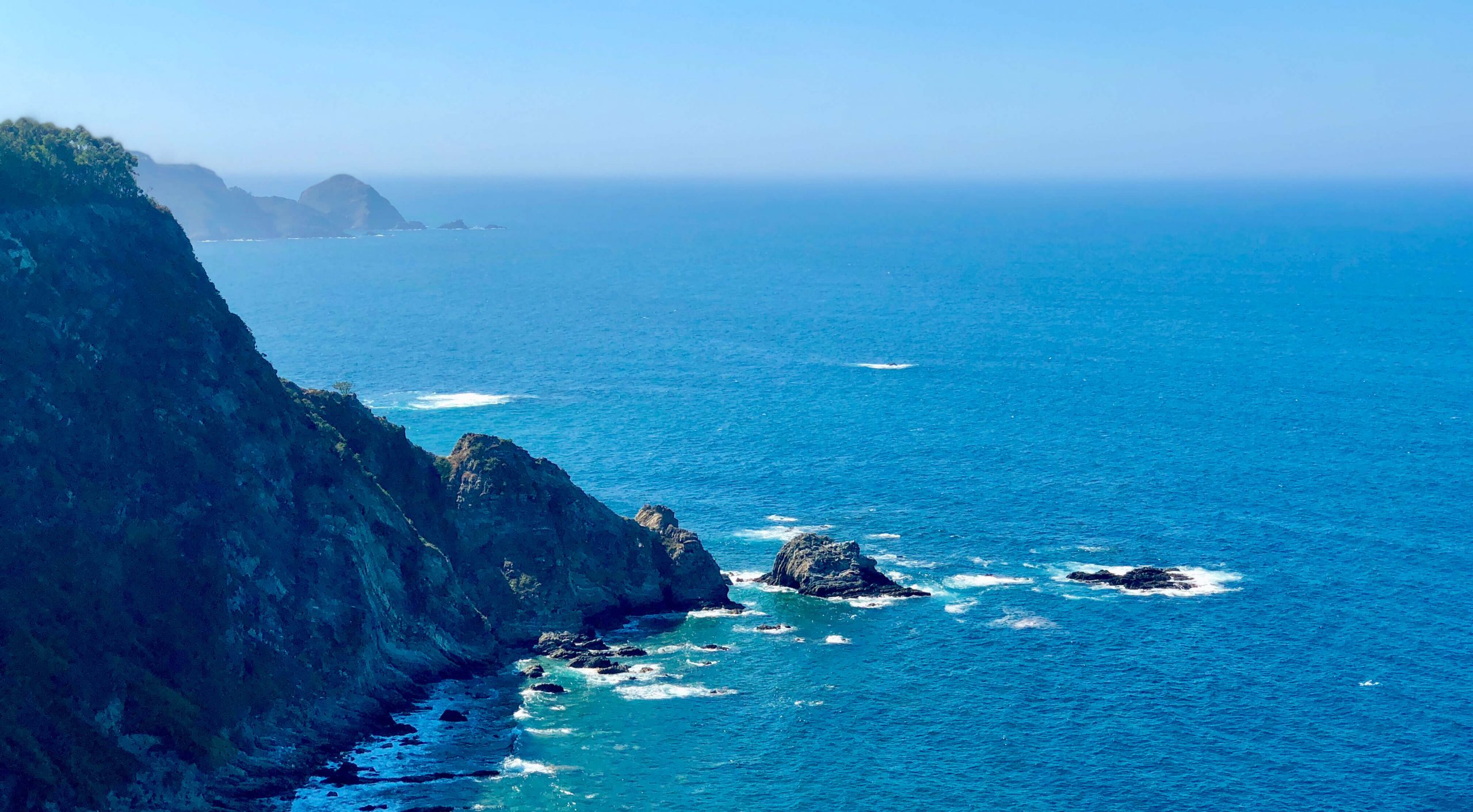
Maybe I’m just imagining it because I’ve been gone for so long, but everyone here in California seems to smile more and is generally more friendly than I remember. Perhaps it’s because I’m so happy to see people out and about, or maybe it’s because I can finally see people’s mouths again! On the other hand, I am sorry to see the prices of everything climbing so much. It’s been two years since I was last in the States, and I didn’t have a personal American pandemic experience, but the changes that have come about since 2019 are incredible; I hope that the quickly rising inflation will be curbed soon and return closer to a more manageable level. We’ll see…
The prices of European wines in general haven’t yet seen any unpredictable increases, aside from those caused by the freight woes that have thus far been counterbalanced by the dollar’s increased strength against the euro over the last quarter. We should also expect some shifts given the increased cost of basic materials like bottles, labels, and corks. These are only a few of the factors that might increase prices, which are proportionately negligible for expensive wines, but for wines of lower price points, the differences will be more noticeable and may push some of them up into the next tier; those $20 retail bottles might soon be $23/$24, and the $9.99s might hit $11.99. Thankfully, we’re not there yet.
Prices in regions like Burgundy are always on the rise, while most others remain more stable. Burgundy has for many years suffered greatly on many fronts, what with the Côte d’Or’s hailstorms of the early 2010s, the massive heat in 2018, 2019, and 2020, followed by the terribly difficult 2021 vintage yet on another front was cold and wet, a paradise for fungus. The expectation of fresher and tighter wines with lower natural alcohol that are sometimes paler and even harder in their youth are showing signs of possible irreversible change toward a bolder style, despite the efforts of gentler handling and earlier picking. Many regions that are known and counted on for their snappy, fresh wines seem to be hanging on by a thread to their past iterations, and it’s hard to know how long they will be able to hold the line. Continental/Mediterranean climate wine regions furthest from mountains and oceans seem to be suffering the most.
Eventually we will have to accept that our expectations for what was and even for what is, at this very moment, will have to shift. Some regions who in the past could barely find market-friendly ripeness in their wines are finding new success, while others seem to be experiencing a very different style of wine than in the past, or are in a concerning and heartbreaking decline. There are a couple of solutions, including the obvious dramatic change in the way humanity goes about its daily life by making the necessary adjustments to curb climate change (which in itself would be a paradoxical goal for a wine importer to fulfill). Another approach, like any other investment, is to explore a greater diversity with our wine choices in search of newly emerging talents in incredible terroirs that have been lost to the economic crisis of generations past, many of whom work toward the goal of environmental preservation.
Anyone who has followed us for a while knows that we’ve greatly expanded our European foothold. Our adventures have led us to a wider range of wines outside of France (our traditionally strongest country) and further into Spain, Portugal, Italy, with a dab here and there in Germany and Austria. Wines from the latter three countries were long supplied to us by other importers, whereas today we import them all directly ourselves.
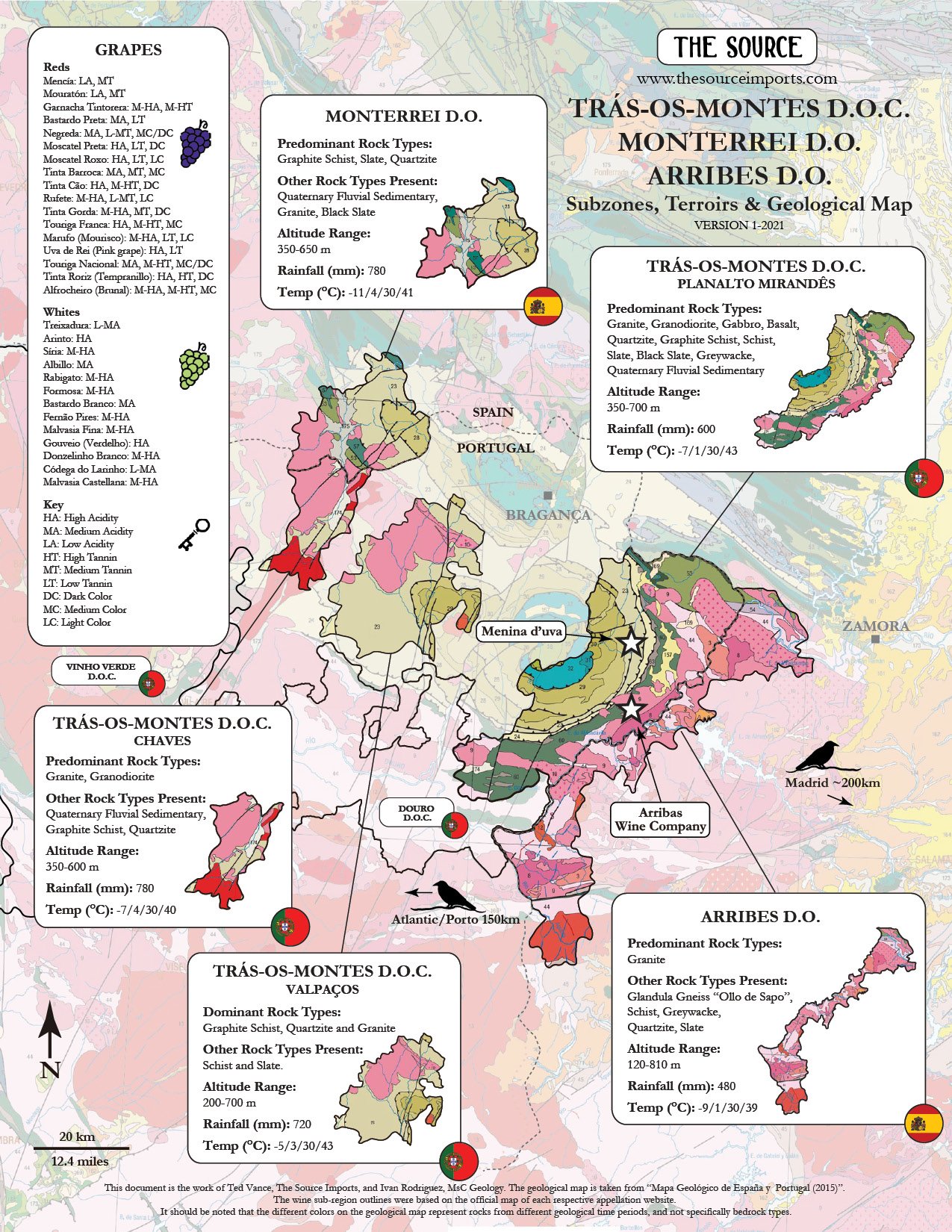
I’m holding onto many geological maps that we’ve finished so we can release them as nice support material for the arrival of new wines from those regions, and this month we have one for our releases from Trás-os-Montes, in the far northeastern region of Portugal. It’s a remote place near the border of Spain to the north and east with gorgeous earth colors from orange to red to even yellow earth, a rainbow of wild shrubs, and a vast open blue or star-pocked sky, framed by rugged and severely-eroded mountains that are now big hills and short mountains, at best, but are thought to have once been as tall as today’s Himalayas. This is an agricultural land with a massive output of olive oil, grapes, vegetables, fruit trees, and animal products. For our growers there, Menina d’uva and Arribas Wine Company, it’s a land endowed with a natural talent for wine from ancient, indigenous vines that often have dozens of names for the same grape variety. It’s a colorful map because this is a land of great geological variety in a very arid landscape. Enjoy it and read further into this newsletter for more about wines arriving this month from our producers in this region.
Some of our long-awaited new producers are finally touching down after the first batch of enormously delayed containers, along with some wines that are nearly a couple of years late. A few orders on this boat were dispatched more than six months ago! Last month it was Italian arrivals, this month they’re all from France, Germany, Spain, and Portugal. France is the slowest of all countries door-to-door, and our container from France was launched almost two months before the Iberian container, and they’re landing at the same time. Crazy days…
I know of no other producers in the wine world with a greater commitment to finding extraordinary terroirs in the middle of nowhere than our two from Trás-os-Montes: Arribas Wine Company and Menina d’uva. Most winemakers want at least a little contact with inspired restaurant cooking and access to a good market. Here, there is nothing of the sort for hours by car, and these two are even separated by a forty minute drive, even though they rely on each other when they need to borrow winery equipment and materials. I tip my hat to their pursuit, funded solely by their own pocketbooks and a sincere desire to make something special in the isolation of what appears to be a dying wine region.
The new arrivals from French transplant with Portuguese heritage, Aline Domigues, under her Menina d’uva label are the same three cuvées that blitzed through our wholesale channels last year. Her white wine, Líquen, is deeply textured (a classic white profile from the top to the bottom of this country) raised in stainless steel and mostly composed of Malvasia, along with a field blend of ancient varieties grown on her area’s mix of metamorphic rocks—various slates, schists and gneiss. Líquen’s characteristic aromas evoke the sense of highland grasslands with dried flora, rock outcroppings, and open blue skies. It’s overtly savory, which makes it ideal for food; in fact, it’s kinda like food, with its attractive aromas of dried pasta, bread dough, and dried herbs and grasses. The fruit is in the white-flesh spectrum, with pear, apple and cherimoya. Texturally, Líquen is a mouthful despite no intentional skin contact outside of a gentle crush by foot prior to pressing. The high amplitude metal and mineral sensations in its youth are palate staining and resonate with a streak of fresh acidity down the center and back into the throat. The finish is lengthy and activates all points on the palate, from the front, sides, middle, and back. Overall, it’s an extremely pleasant wine and its freshness is a welcome surprise from this region known for its weighty, less interesting, white wines.
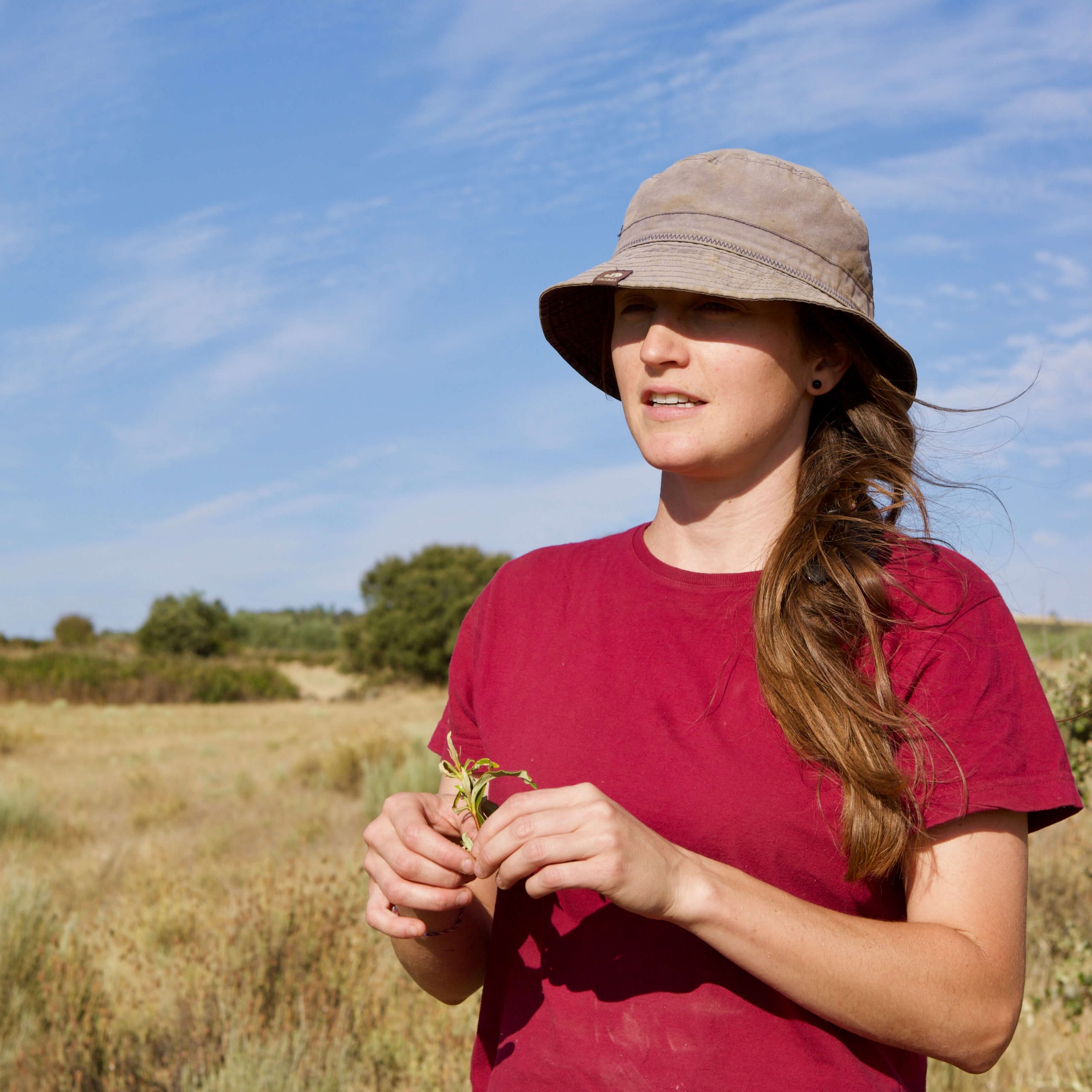
The first red-colored wine in Aline’s range, Ciste, is a mixture of 70% Bastardo Preta (Trousseau, in France and Brancellao in Spain, among its many other names) and Negreda (known in Spain as Mouratón, Tinta Gorda, and Juan Garcia), and 30% white, with Malvasia, Bastardo Branco, Formosa, and others in minuscule amounts. Here in the two villages of these vineyards, Junqueira and Matela, the soil is more clay-rich and alluvial, which makes for a supple wine despite its high aromatic lift, fabulous textures, and unexpected palate weight—it looks like a lightweight but feels like a middleweight. The grapes are completely whole bunch and co-fermented for only four days and aged in stainless steel. The short time on skins is intended to achieve good fruit and floral extraction without digging too far before carbonic characteristics overwhelm the wine. Aline wants to keep this one truer to the expression of the place without using fermentation techniques that push too much fruit and fermentative aromas to the forefront. The first vintage, 2018, was lights-out delicious. The following vintage was the same, and this year should be even better. In its youth, it’s aromatically effusive and bright, and carries the scents of this arid countryside and its moorland brush and sweet, poppy-like aromas. The fruit characteristics are concentrated around reds, oranges and yellows—think wild and snappy-to-the-tooth cherries, pomegranate, and the bright flavor of early fall Fuyu persimmons.
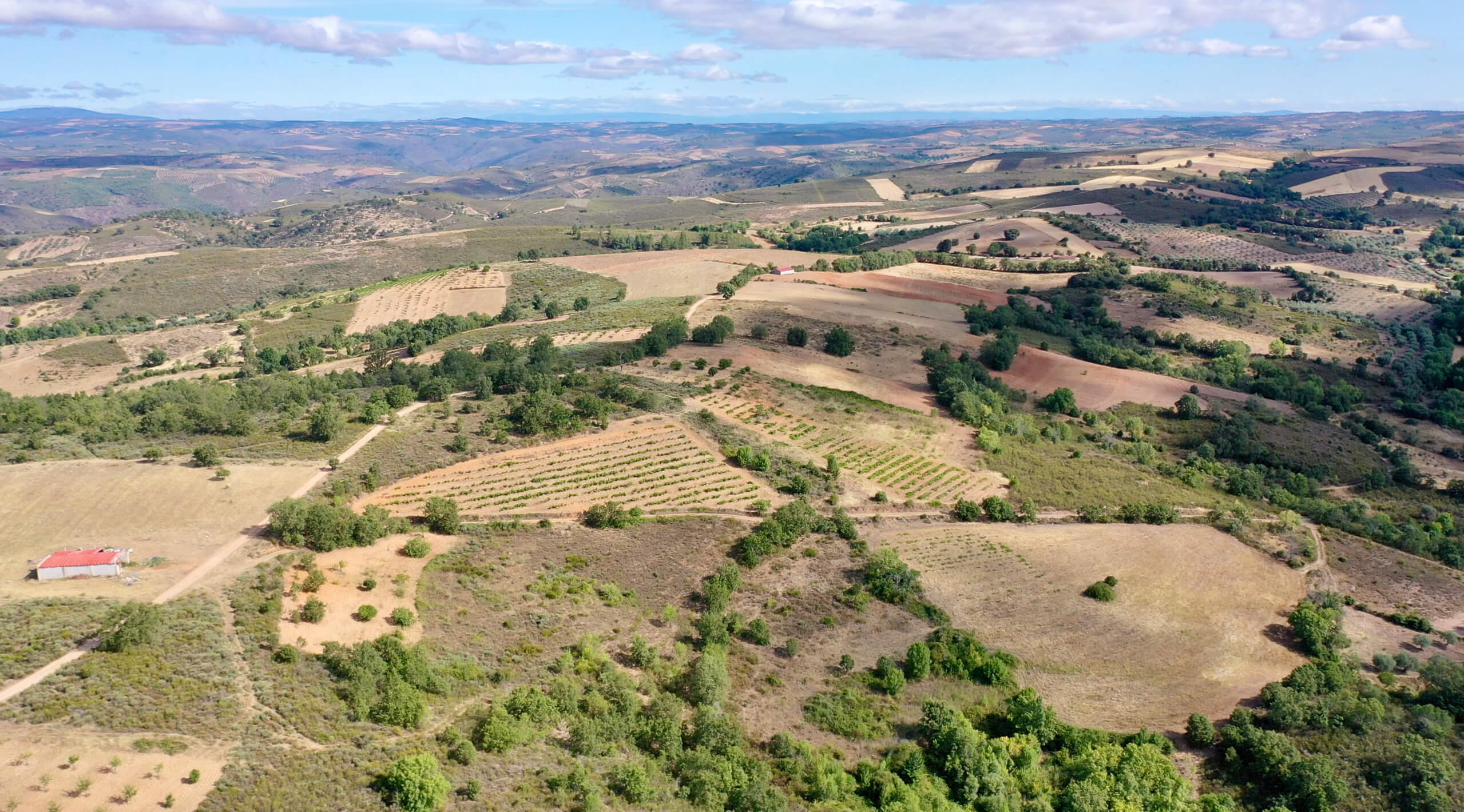
Menina d’Uva’s Palomba is made of 90% Negreda, a vine known to produce big, juicy, dark-colored berries but with surprisingly very little tannin. It’s mixed with other red grapes few outside or even inside of Portugal have heard of, like Uva de Rei, Moscatel Preta, Moscatel Roxo, among others. It comes from five different plots located in the villages of Uva, Mora and Vale de Algoso, and is grown on a mixture of schist and quartz scattered about on the surface of the vineyards. However, a walk through many of the plots revealed stone walls made with gneiss, slate, and schist—a clear indicator that it’s not so easy to say precisely what the bedrock is underfoot in the area, even in small parcels. In the cellar, Palomba was about one-third destemmed by hand, the fermentation lasted for two weeks and was gently extracted throughout by foot. Negreda has a tendency for taking on reductive characteristics and often needs more time in the bottle before it’s time to dig in. Aline’s wine, Ciste, by contrast, is off to the races upon opening. The pressure points within Aline’s wines are deep and fully mouth filling while remaining ethereal and tense. Both red wines mirror their maker and are filled with generosity, joy, calm, energy, and subtle wit.
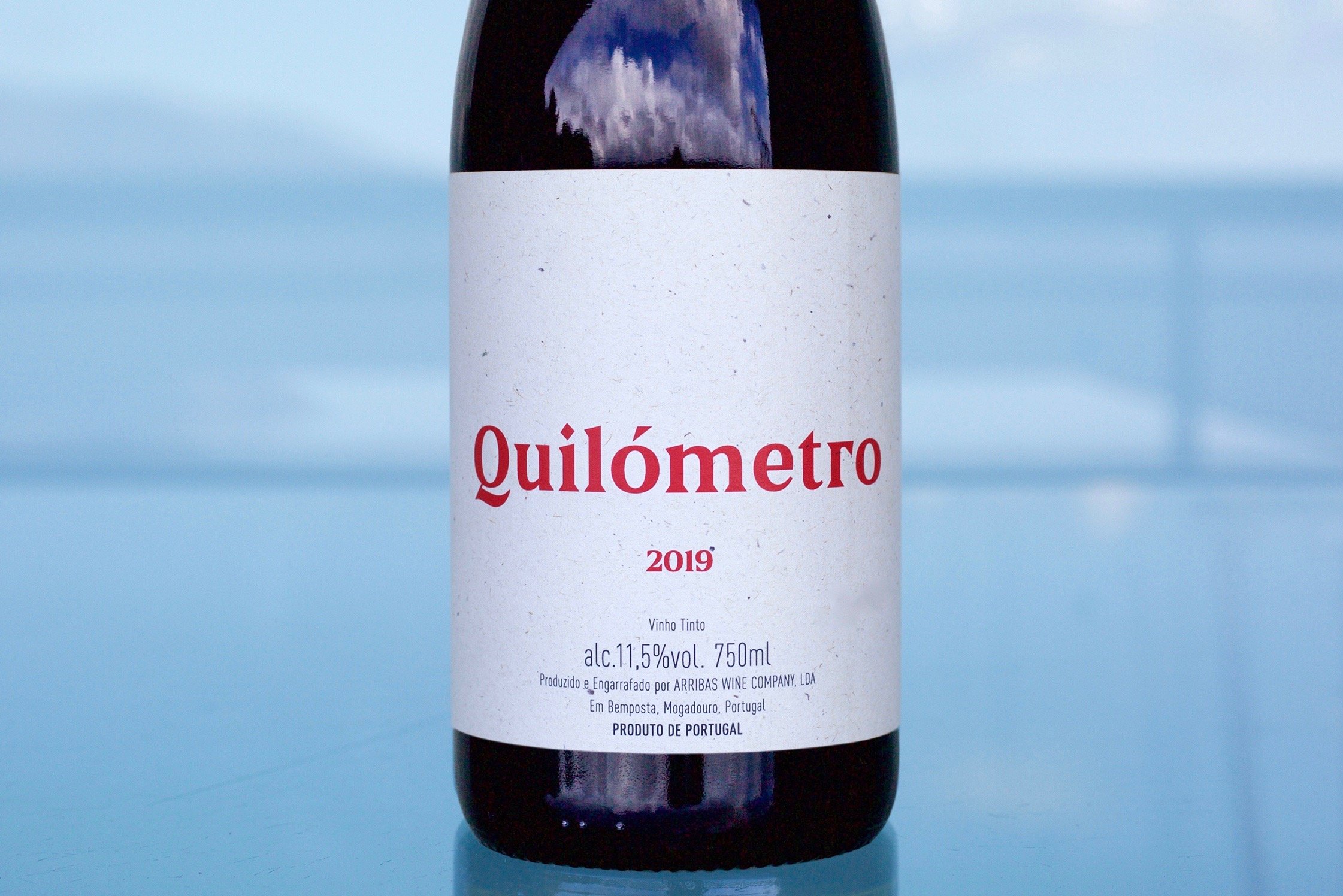
The guys over at Arribas Wine Company, Ricardo Alves and Frederico Machado, continue their reclamation project in the far eastern edge of Trás-os-Montes, always within sight of the Douro River and the Spanish border. Never have I seen two people so committed in mind, body, soul, blood, sweat and youth, to their massive project to protect what remains of this landscape and its more than fifty indigenous grape varieties (and counting!) from big-business wine companies. All their wines are co-fermented field blends from dozens of parcels with so many geologically different spots (mostly igneous rocks and to a lesser degree, metamorphic) along the Douro River where a short length of river acts as the physical northeastern border between Spain and Portugal.
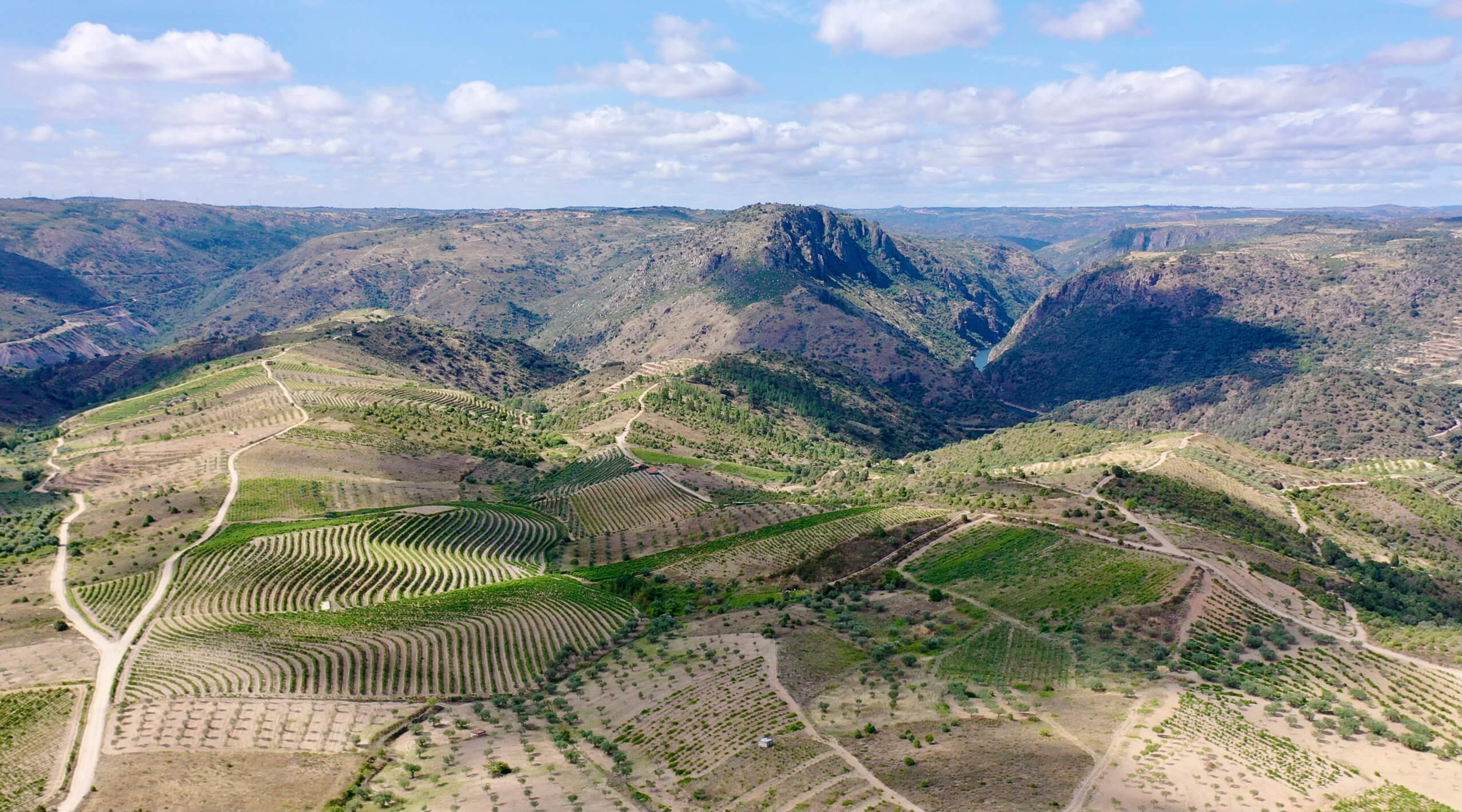
These guys don’t know the proportion of grape varieties that make up their wines because it’s simply impossible to ascertain, but there are few blended grape wines in the world with such terroir distinction as theirs. These wines taste and feel of the summer sun and its freezing summer nights that can swing more than 40 degrees Fahrenheit. Some wines are bright red and with 11.5% alcohol, like the seventy cases produced of Quilómetro; others are inky black and animal but with 12% alcohol and raging freshness, like Raiola, with just over a hundred cases made. Their starting red, Saroto Tinto, is a perfect balance of high and low tones—the result of more than fifty different ancient, indigenous, old-vine varieties farmed in different plots picked together and forged into one masterful and profoundly complex wine that should fall within any curious wine drinker’s budget. The reds of Arribas are tremendous, and while Quilómetro and Raiola are spendy, they are well worth it for the experience.

Arribas Wine Company has new additions arriving on this boat for which I had to push their buttons to increase our allocation: Saroto Branco and Saroto Rosé wines. This dizzying duo is extremely low production—considerably smaller than the already limited Saroto Tinto—with loads of familiar, beautiful nuances, and with characteristics that may be a first for many, even those with a lot of experience with Portuguese wine. Like the rest, both are field blends of uncountable grape varieties and made in a very simple way using a mix of barrel and concrete aging. Interestingly, the rosé is an equal blend of red and white grapes. It’s easy to see that neither of these Saroto wines are fined or filtered, and they represent extremely well made natty (not nasty!) wines. Given the overwhelming demand for orange wines (Saroto white is really an orange wine) and the drastic limit on the rosé, these wines will evaporate quickly, so reach out as soon as possible if you are interested.
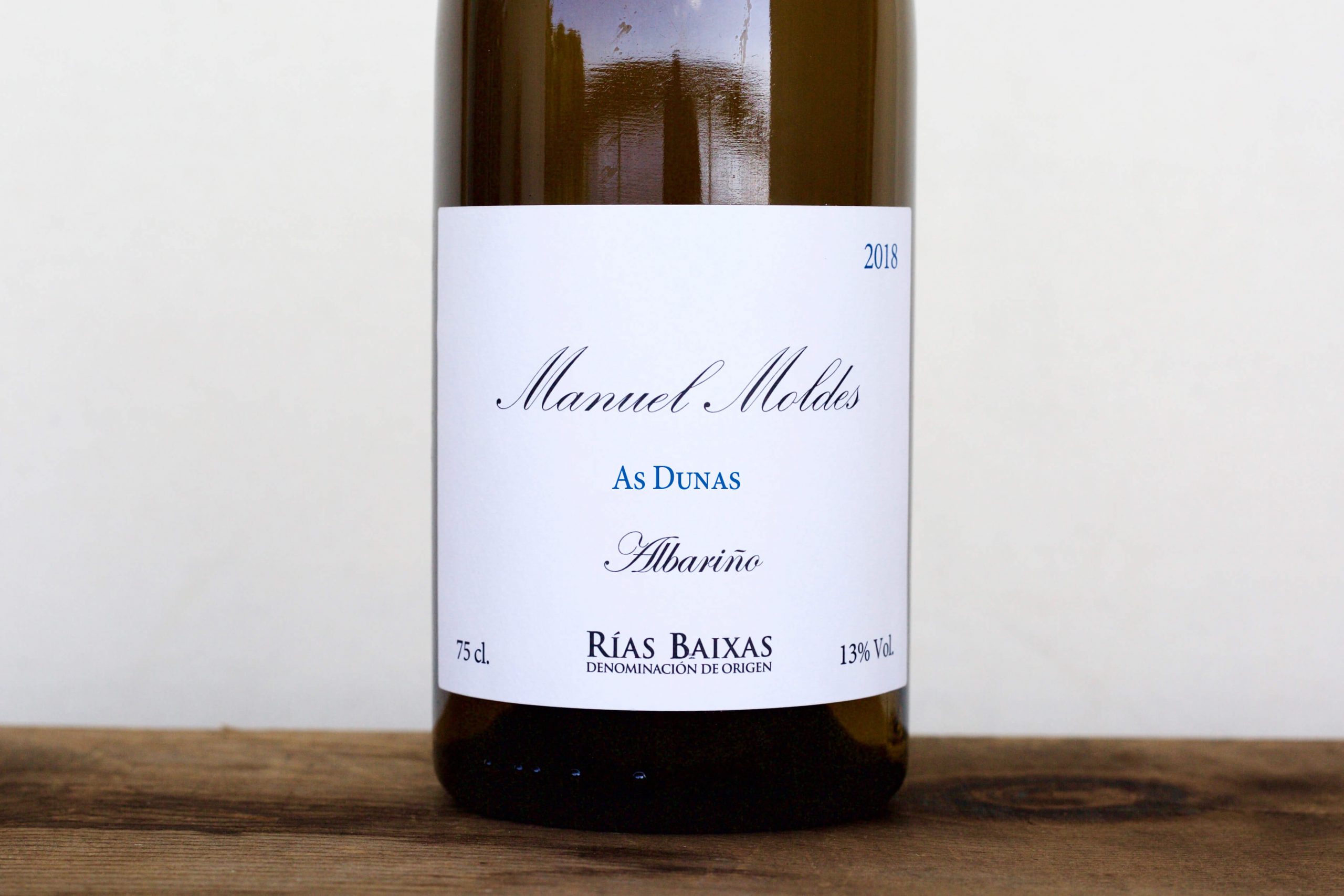
Things would be a lot easier with Manuel Moldes’ wines if we could buy them by the container. The reality is that we can’t, and what we do get disappears in a flash—which is only fun if you’re fast on the draw. We cut our teeth some years ago with a good Albariño producer in the south of Rías Baixas, in the subzone of Contado de Tea, just across the Miño River from Portugal’s most renowned subzone of Vinho Verde, Monção e Melgaço. Salnés, home to Manuel’s Albariños, is ground zero for the top wines and producers in the entire region. Most vineyards are within sight of the Atlantic, and its regulating effect and generally cold temperatures supercharge its Albariños with high acidity levels rarely equaled in still white wine, the world over. Manuel (whose friends and family call him Chicho—same nickname for his father and older brother…) is not just a fortunate producer who benefits from the magnificent terroirs of Salnés, he’s also widely considered one of its very best, along with wineries like Albamar, Nanclares, Zárate, and, perhaps most of all (at least for me), Forjas del Salnes’ Leirana wines, a collaboration of the Spanish luminaries Raúl Pérez and Rodrigo Mendes. Manuel’s white wine range is a sure thing, and 2019 is a perfectly-suited vintage for his style: intense mineral, zippy freshness, citrus for days, and gobs of subtle complexities. The first Albariño in his range, 2019 Afelio, comes from a collection of different parcels (more than twenty) mostly grown on granite soils and a smidge of the rare and prized vineyards grown on schist. It’s aged in a mix of tanks and neutral French oak barrels. For those of you who know Arnaud Lambert’s gorgeous Saumur Chenin Blanc, Clos du Midi, from Brézé, this is a solid answer to it from Rías Baixas. It’s simply far too good for its price, and its limited quantity makes it hard to spread around too far.
Coming from a very rare bedrock and topsoil composition of severely decomposed schist, 2019 A Capela de Aios is serious business. In contrast to Afelio and its quasi-Clos du Midi characteristics floating high in the ether, this wine has substance that could easily be compared to other Chenin Blancs we work with from Patrick Baudouin, in France’s Anjou, an area with many vineyards on the same rock type developed during the same series of geological events that took place around three-hundred million years ago: the Variscan orogeny. This wine is aged solely in old 500-liter French oak barrels for a year or so before bottling in order to sculpt its powerful body and dynamic power. Even more limited than Afelio, it’s simply a must for anyone seriously into dry Riesling, Chenin Blanc, Chablis, and the Savoie’s ripper, Jacquère. A mighty wine with seriously fine trim.
Last in the range of Manuel’s Albariños is the 2019 As Dunas, perhaps the newest and most important unicorn in the world of serious white wine. Manuel, Raúl Pérez and Rodrigo Mendes discovered this small collection of vineyards grown on extremely fine-grained beach sand derived from schist, in the far south of Salnés, overlooking the Ría de Pontevedra and the Atlantic. With an almost entirely new and exciting face of Albariño, these three winegrowers are splitting the parcels and bottling them under each of their own labels. Its combination of fine schist sand and the open face to Atlantic winds renders an Albariño with extremely refined nuances of citrus and slightly golden-brown sweet spices, and an explosive pallet supercharged by acidic freshness and deep salinity. As Dunas, translated as the dunes, is as rare as it is special. With only 120 bottles of this wine imported for the entire US, there simply won’t be enough to go around.
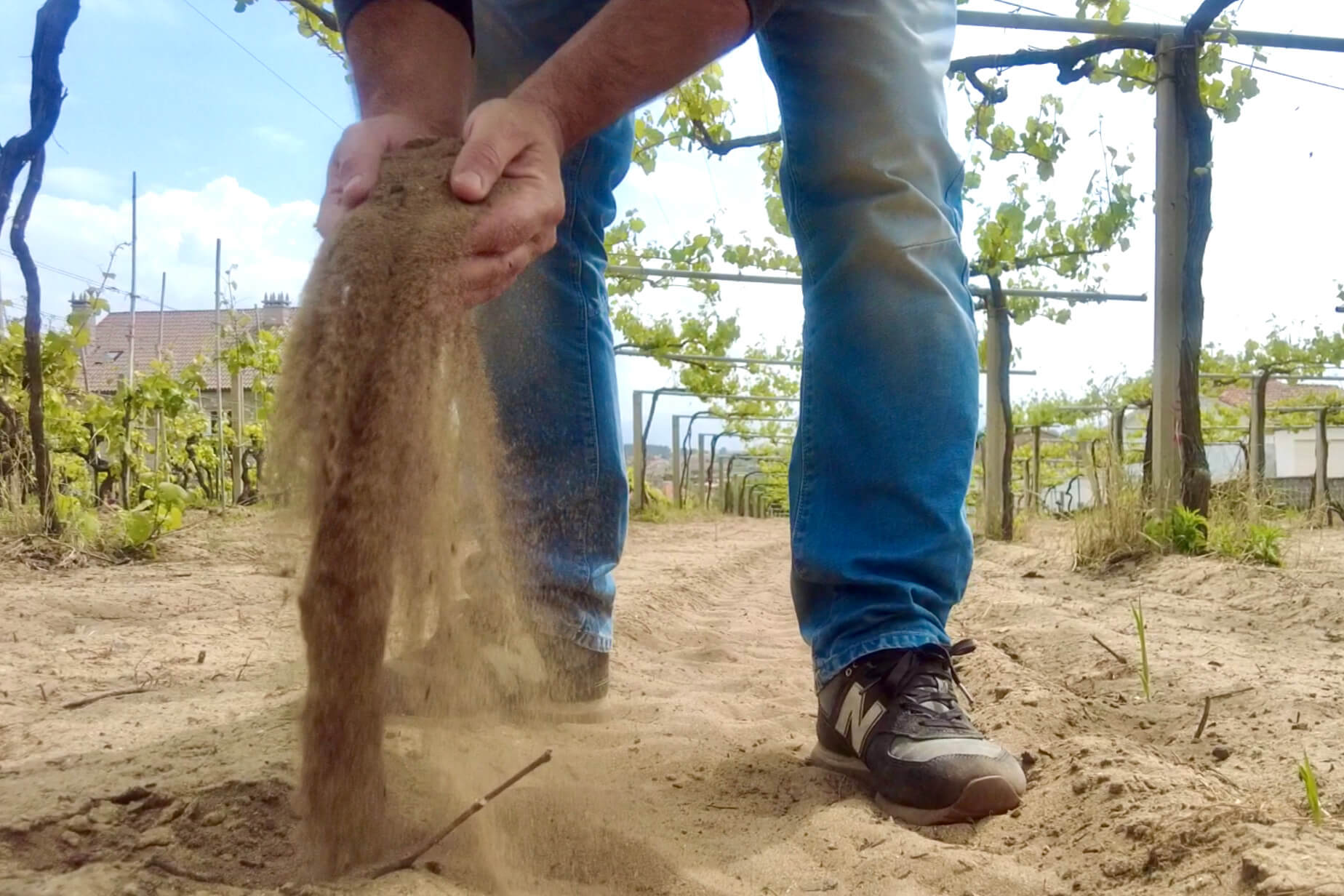
Manuel’s red 2018 Acios Mouros comes from Rías Baixas and is composed of 60% Caiño Redondo, 20% Espadeiro, and 20% Loureiro Tinto. The first two of these grapes have more acid than tannin and bright aromatics, while the latter is darker with an equally high level of matching tannin and acidity. In Rías Baixas and Northern Portugal’s Monção e Melgaço, red wine historically had a majority share of vineyard land, whereas today it’s the opposite. Red wines of Rías Baixas are often terribly acidic and intense with bright aromas, but there are those that manage to wrangle what may have been beasts in another cellar into something more pleasant, aromatically addicting and much more inviting—while still maintaining the vigorous energy of a white wine. Grown on a mixture of granite and schist bedrock, many of the vines are ancient, with some of them on pre-phylloxera rootstocks that are as old as two hundred years. The average age of vines is around fifty, which helps curb what may be excessive energy from the youngest of them. The old and ancient vines also impart a richer mid-palate with sappier fruit—both welcome flesh enhancers for this otherwise straight-shooting red that feels every bit as much a white, save the tannins, red and black fruits, and earthy savory notes accentuated with nuances of bay leaf and spice. 2018 was a much warmer vintage than the surrounding years, which makes this year’s Acios Mouros a standout from any iteration bottled before it. It’s special and as rare as the others in Manuel’s range.

A long-time friendly connection with Bierzo producer José Antonio Garcia resulted in the creation of Lentura, a complete outlier in Manuel’s lineup. In this land known for its rustic, heavy wines, 2019 Lentura is a Bierzo wine led by vibrant natural tension and freshness, red and black fruits, pointed mineral textures, and medium-to-low-weight alcohol compared to most of the wines made in this region. Alcohol and power are easy to achieve in Bierzo; it’s finding balanced elegance that presents the much greater challenge. A little more than three hours toward the east from Rías Baixas, the climate in Bierzo is extreme with a much more continental/Mediterranean influence and very little influence from the Atlantic. The summer days can be as hot as 45°C (113°F) while the nights can drop to 15°C (59°F), making for one of the most extreme diurnal summertime shifts in the entire world of wine. During winter it often reaches temperatures as low as -8°C (18°F), or maybe even colder. Bierzo also claims the distinction of the oldest average vine age within Spain, and quite possibly all of Europe. The mix for the 2019 Lentura is 70% Mencia and 30% Alicante Buschet (the 2018 was 60% Alicante Buschet and 40% Mencia), making for a more elegant version than last year’s Lentura, which was already a delicious, fuller-bodied wine. Its altitude and geologic setting are as broad as its diurnal shift. On the valley floor at an altitude of 300 meters, the vines are grown on clay, sand and large cobbles, while high up on the hills toward the west, the altitude can exceed 1000 meters and is grown on pizarra (slate) bedrock and topsoil. Manuel’s Bierzo is rendered from vines with an average age of seventy years and comes from both the valley floor and high up on the slate hillside. In the cellar it is fermented with 20% whole bunches for five to seven days, followed by aging in an equal balance of stainless steel and old, 300-liter barrels. Manuel really hit the mark in 2019, making this his best yet.
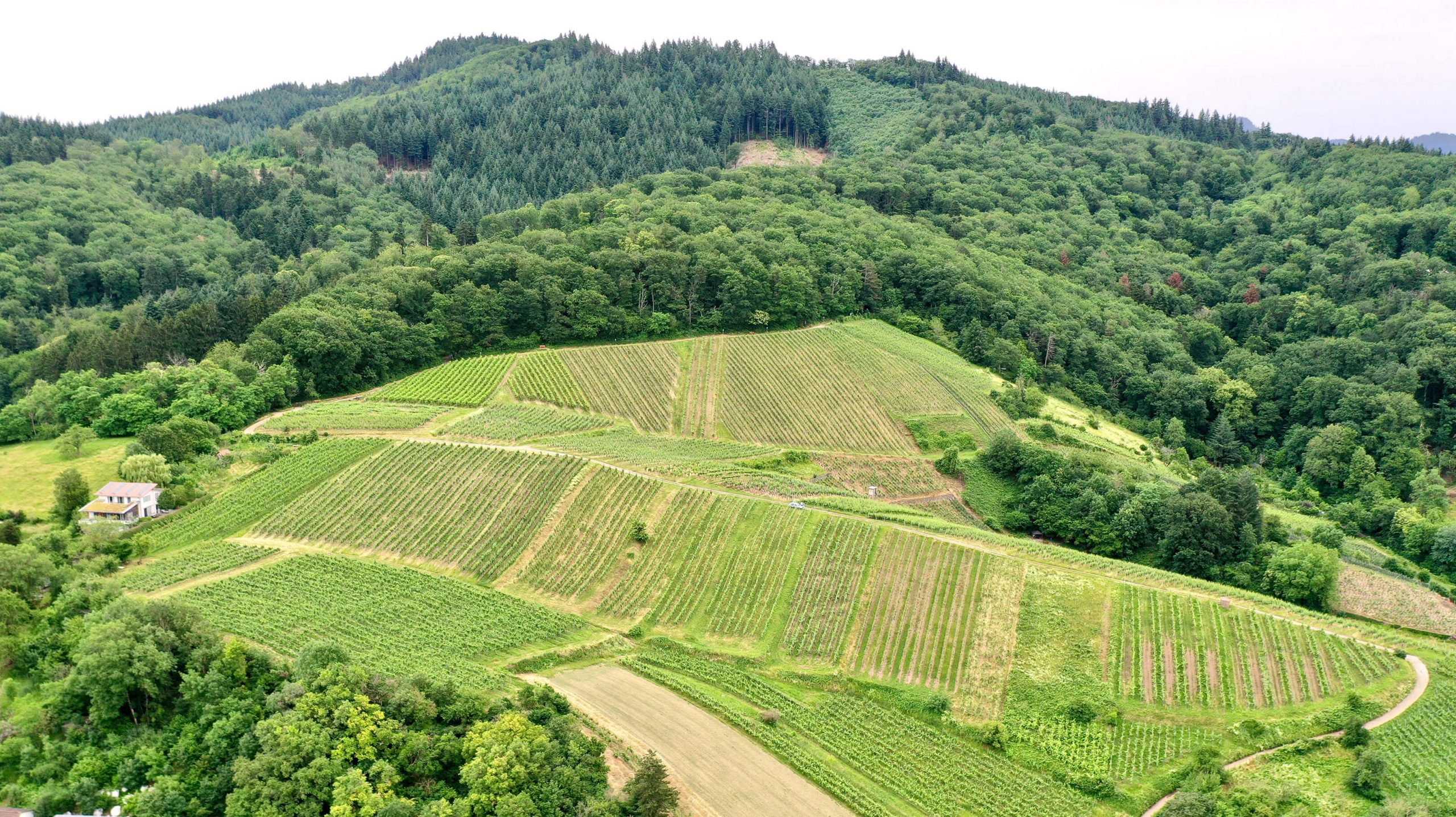
The much-anticipated new vintage from Wasenhaus is finally arriving! There are a half dozen or more new cuvées added to our roster this year and the problem is that the quantities are so minuscule that it will be hard to satisfy the demand. Despite their obviously superb and game-changing quality, I am so surprised by how well these wines have been received by the market; who would’ve thought that German Spätburgunder and Weissburgunder have become some of the most coveted wines in our entire portfolio? Apologies in advance that we won’t be able to satisfy all requests. For those of you who will acquire some, enjoy this glimpse into the bright future of non-Riesling German wines. There’s a video on our website of Alex Götze taking us through their entire range. Don’t miss it!
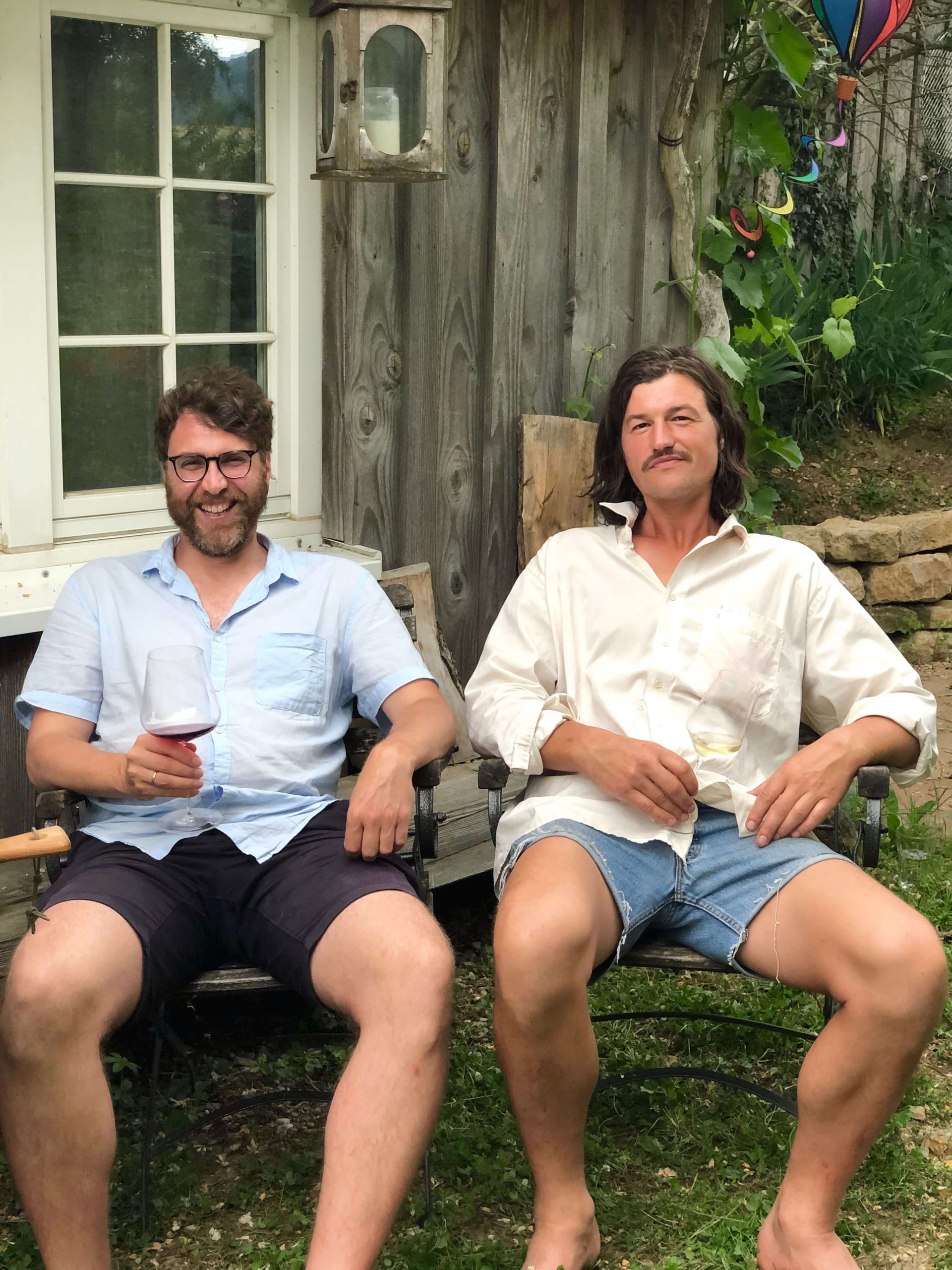
In recent years, there haven’t been many more exciting new arrivals to our collection than Katharina Wechsler, a superstar-in-the-making German Riesling producer with ridiculous vineyard holdings in the epicenter for dry German Riesling, Rheinhessen’s Westhofen and Flörsheim-Dalsheim. This organic (certified since 2021 vintage) and biodynamic winegrower is the owner of enviable holdings of the vineyard, Kirchspiel, and a small chunk of perhaps the most coveted of all, Morstein. With not only Riesling in play, Katharina loves concocting wines that range from pure pleasure and fun, like Sexy MF, her Pinot Noir rosé that is too delicious to be true, her savory orange wines, to her classically-styled dry wines, like the knockout Scheurebe Trocken, also arriving on this container. However, the most important wine arriving this month (the big cru wines will come on the next container) is her entry-level Riesling Trocken. It will give any of Germany’s top entry-level dry Rieslings a run for the money, but highlights the lifted and elegant exotic characteristics of Riesling only found in this part of the world. There’s a good first batch of it, but we expect it to quickly disappear. Everyone at The Source is happy to finally have German Riesling as a part of our portfolio once again, and we’re so lucky it’s this one!
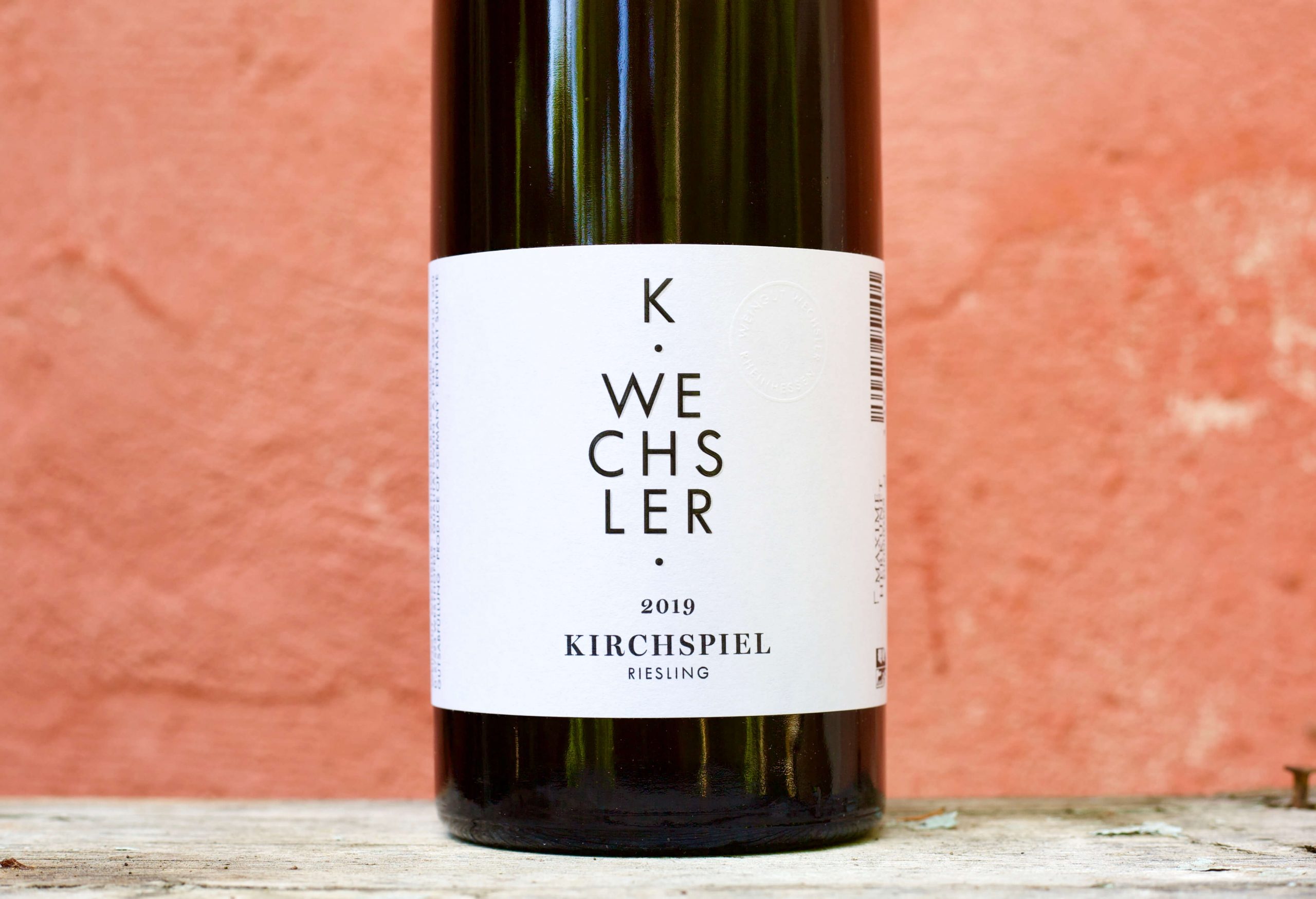
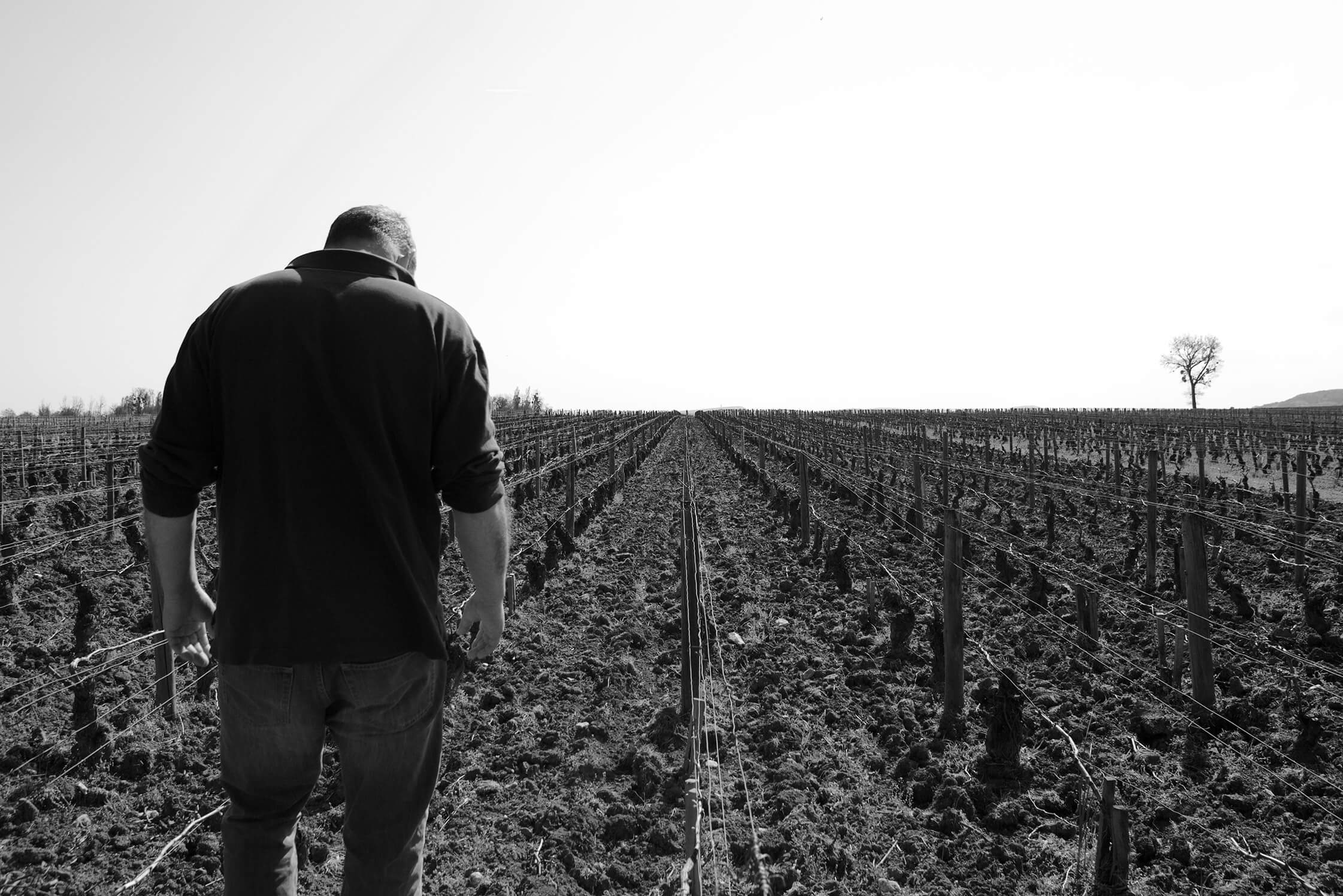
Rodolphe Demougeot’s 2018s and 2019s have both arrived on our French container, and a double-up of Burgundy vintages on the same shipment has never happened for us before (Duband’s incoming wines will repeat the phenomenon!), but we have no choice if we want to get back on track with the normal release schedule and without missing anything. Demougeot’s wines are extremely reliable—dare I say it, predictable, in the best possible ways: overall quality, very measured bandwidth, and no extremes. He has committed to organic farming since the early 2000s and shortly after that his interest leaned toward a sleeker wine profile. This is great news for his 2018 reds, which don’t follow the vintage’s trend of heavier weight. All the wines remain aromatic, with ripeness kept in check and a much higher degree of fresher fruits than can be found throughout much of the Côte d’Or in 2018. 2019 red Burgundy is also a fuller year with perhaps a touch of redder fruit in the mix with the dominant darker fruit notes. The vintage is touted yet another great, but it’s very early to know how great it might just be. In any case, there is plenty of freshness to be found with Demougeot’s wines (as with Duband’s 2019s) and we feel fortunate to have Demougeot on our team; he fits in perfectly.
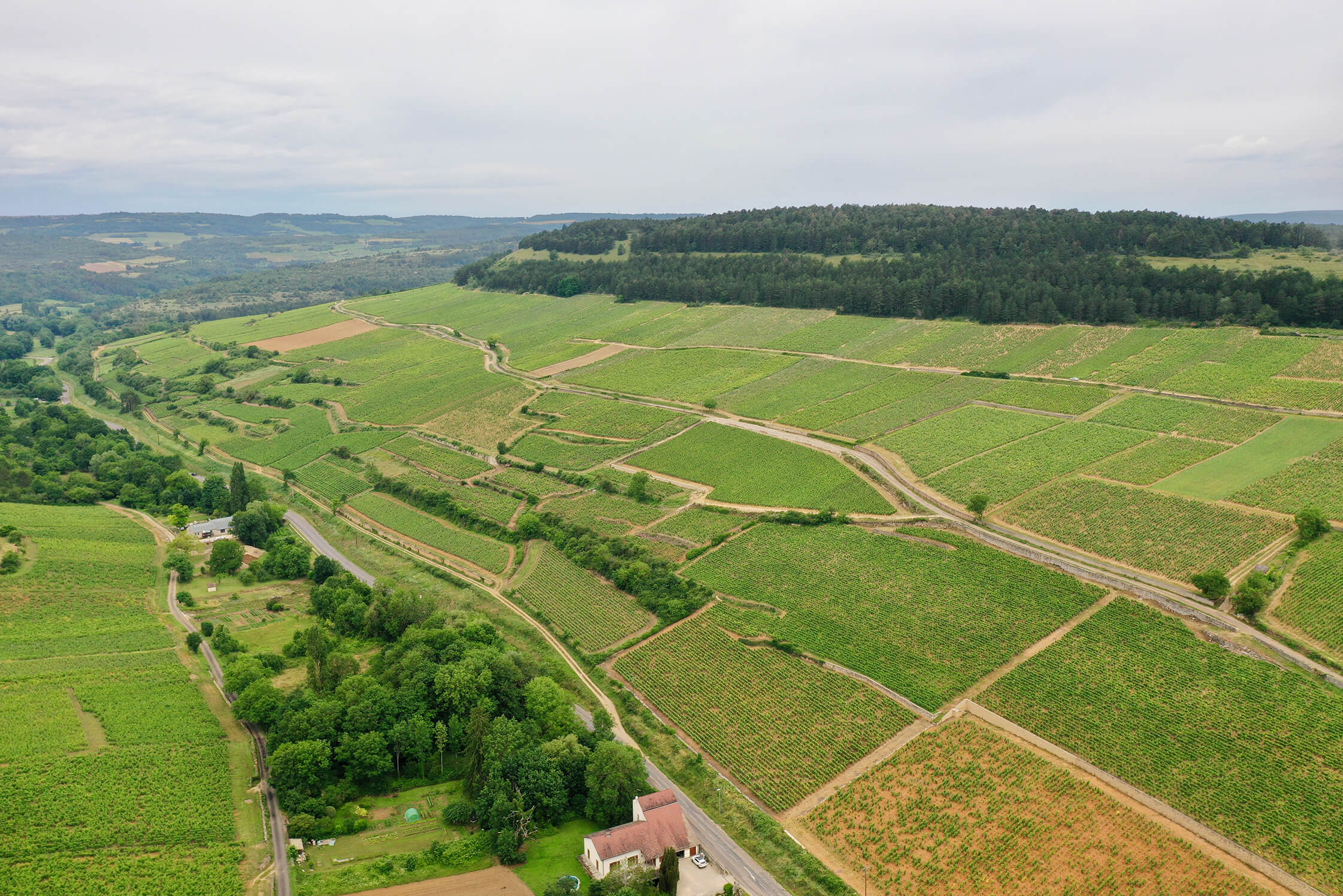
Despite their very successful first vintage in 2016, the movement in overall quality of the wines crafted by the brotherhood at Domaine Chardigny has known only one direction: up. Initially, Pierre-Maxime and Victor Chardigny took the reins from their father, Jean-Michel, a French cartoon-character-of-a-man, with his exaggerated French accent, sweetness, accommodating nature and perennial smile. Then the middle brother, Jean-Baptiste, who spent quite a few years as the vineyard manager for Joseph Leflaive’s biodynamic Mâconnais domaine after he finished enology school, finally rejoined the ensemble of this joy-filled family. The quality from the Chardigny boys in the 2019 and 2020 vintages is a notably different level than their first three vintages, 2016-2018, which is partly due to the better balance of these seasons compared to the previous ones, but even more so to their rapid development as winegrowers.
Despite the rise in quality of their Beaujolais wines, it’s Chardigny’s white Burgundies that have made the greatest strides. We have taken a stronger position with their Saint-Véran “Vieille Vignes” (from 50-year-old vines) and Saint-Véran “Bois de Fée”, named after the hill itself, facing directly south toward Beaujolais and on the other side with Saint-Amour and Juliénas in view. It’s right at the divergent point of the acidic igneous and metamorphic rocks of France’s ancient Massif Centrale and the limestone and clay that begins precisely at the bottom of Bois de Fée and moves north into Burgundy. What was missing in the past—the complete package from bright fresh notes balanced with the charm and roundness of good white Burgundy—has come into full view with these two. While Côte d’Or whites continue to vault further out of reach for those of us on a wine budget (yes, I too stick to a “realistic” budget despite my fortunate access), these wines raised for a year in 500-liter to 228-liter oak barrels are even more valuable to Chardonnay seekers with a great appreciation for Old World wine.
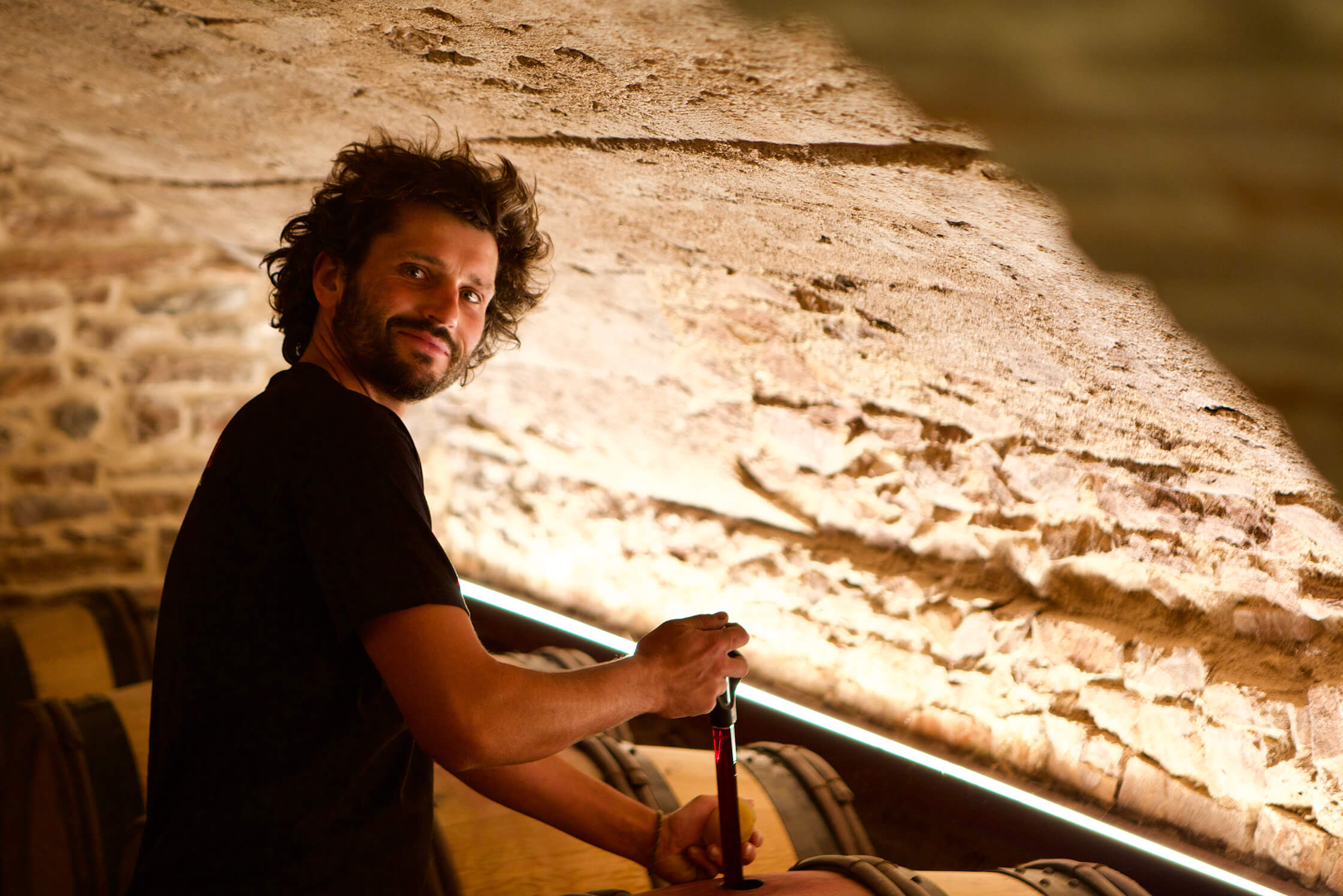
2019 Beaujolais is a wonderful vintage reminiscent of the early 2010s. The fruit is redder and the wines less sun-drenched than 2015, 2017 and 2018. There are certainly many successes to be had between 2017 and 2018, but we are happy to see this more familiar face of Beaujolais once again. Chardigny’s 2019 Saint-Amour Clos du Chapitre continues to dazzle with its trim figure and subtler notes than its counterpart, the 2019 Saint-Amour À la Folie. À la Folie has won over so many with its unabashed, bodacious curves, middleweight texture and big but trim flavor. It was always the greater potential production between these two Saint-Amour crus and was the one they ran most of their experiments on with different aging vessels between concrete, stainless steel, foudre, and small oak barrels (called fûts de chêne, or simply fût, in Burgundy). In 2020, the boys—they all always have such boyish charm, just like their father—really figured this wine out. Tasted out of barrel with Victor and Pierre-Maxime this summer, the 2020 Saint-Amour “À la Folie” was stunning. I asked to taste more barrels to see if it was only the first that was so glorious, and all were the same emotionally invigorating experience. More precise and gorgeous than ever before, all the barrels felt more like Burgundy than Beaujolais!
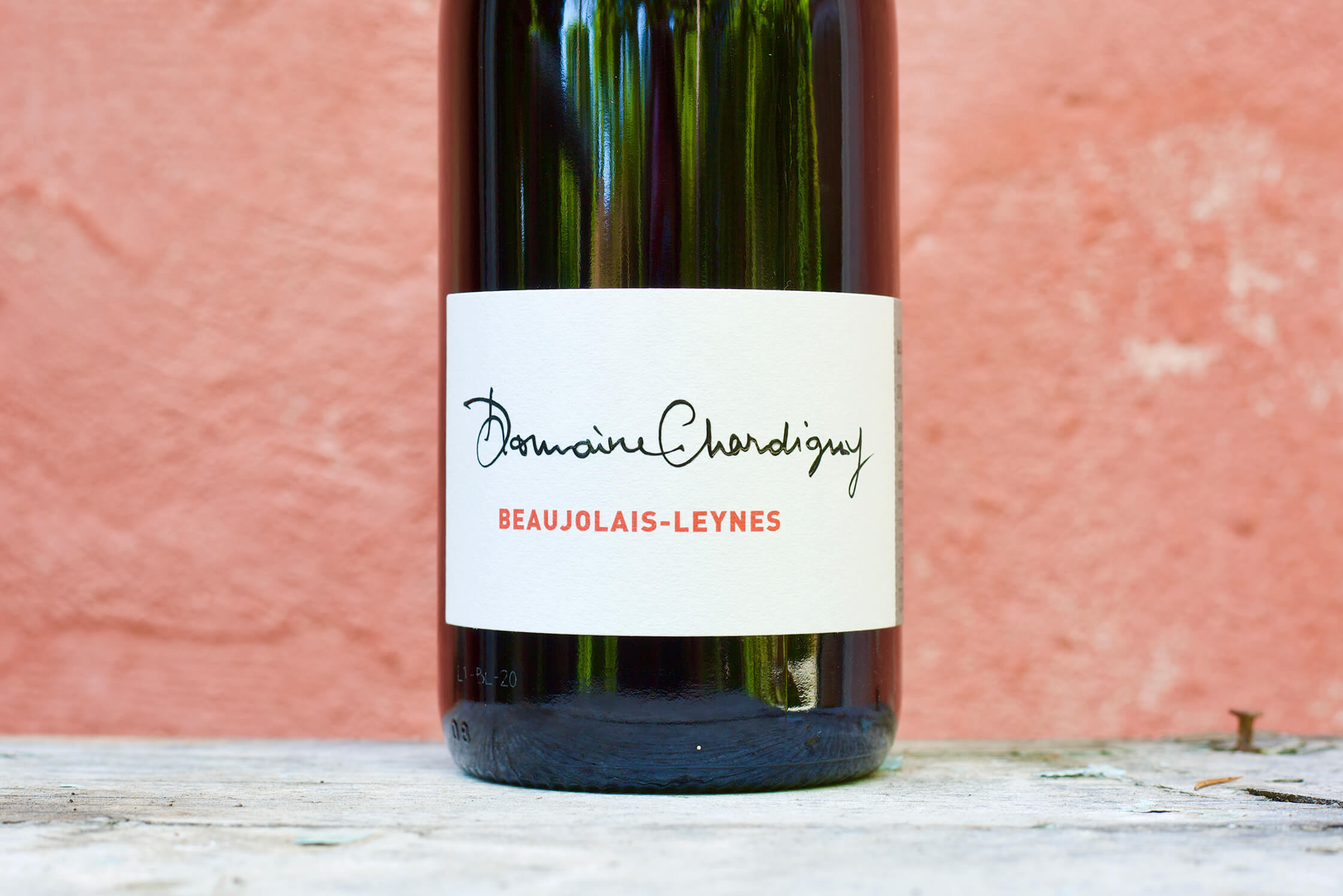
There is a new bottling from the Chardignys that we will begin to import with the 2020 vintage labelled Beaujolais-Leynes, named after their hometown. It’s a Beaujolais-Village appellation wine sourced from vineyards at the previously mentioned geological convergence between Beaujolais and Mâconnais. It’s made entirely with carbonic fermentation with 100% whole clusters in concrete and stainless steel with almost no intervention over its two-week fermentation. Given the shortage of fabulous Beaujolais at affordable price points, we’re bringing in more of this wine to try to fill some of the massive demand. It will easily fall into the right range for many restaurant by-the-glass programs and should hit wine retail shelves at only a hair over $20. For organically certified Beaujolais from a small domaine, that’s a steal. You’ll see…


